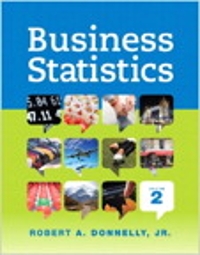Question
This assignment will focus on two food retailers, Metro (https://www.metro.ca/) and Farm Boy (https://www.farmboy.ca/). This assignment will provide you with an opportunity to (1) analyze
This assignment will focus on two food retailers, Metro (https://www.metro.ca/) and Farm Boy (https://www.farmboy.ca/). This assignment will provide you with an opportunity to (1) analyze the extent to which sustainability has been integrated into each company; and (2) recommend a key next step for each company to further integrate sustainability. As a first step, you should research both companies current approach to sustainability. Based on your research, analyze each company's approach to sustainability according to: (1) the Global Compact's Roadmap for Integrated Sustainability; and (2) the discussion about governance and leadership. Based on your analysis, identify a key next step that each company could take to progress to the next sustainability stage. Finally, write concise summary of your analysis, comparisons and recommendations. *************************************************************** The United Nations (UN) Global Compact (2015), developed the Roadmap for Integrated Sustainability to provide guidance for integrating sustainability into a company. According to the Roadmap, many companies initially take a reactive approach to sustainability, which is focused on protecting the company's brand and reducing its risks. Over time, the company may further integrate sustainability into its strategy, functional areas, operational processes, and culture. The Roadmap presents a Sustainability Stages Model that identifies 5 typical stages traversed by companies as they more fully integrate sustainability. The purpose driven stage was identified as the highest level of sustainability integration currently imagined. At this stage, sustainability is inseparable from the company's core purpose, the company is committed to making a difference in the world, and its business model is designed to capture value by addressing social or environmental challenges. It is important to recognize that many companies claim to be purpose- driven. However, most would not fit the Global Compact's description of a stage 5 purpose-driven company. While many socially responsible businesses strive to provide a positive impact, or at least reduce their negative impact, their primary purpose is typically to maximize shareholder value. The Global Compact suggests that motivation is the key to becoming purpose-driven. Purpose-driven companies see sustainability as an important objective on its own, not as a means to becoming a competitive business. Solving social and environmental issue is core to a purpose- driven company's business model. They are focused on delivering shared value. Others use the term social purpose business to describe such a company. According to the Roadmap, functional integration is critical for transitioning to a proactive and strategic approach to sustainability. Each function has capabilities necessary for integrating sustainability to enable a sustainable business model. At each stage of sustainability integration, it is important to determine which functions should be engaged in the sustainability integration process and what contribution each function should make. To become a purpose-driven company (stage 5), sustainability must be fully integrated into all key functions. That is, each function must adapt its strategies and operations to support the sustainability strategy and goals of the firm. The Roadmap discusses the important role of executive leadership and board engagement for strategic sustainability integration and governance. While the Roadmap discusses leadership at a high level, Lesson 5 provides more information about the role and responsibilities of the board of directors and executive leaders in integrating sustainability into a company. It is important to keep in mind that the Global Compact's Sustainability Stages Model is a model, i.e., a conceptualization of the sustainability integration journey. In reality, this journey can take many different forms. For example, firms can exhibit characteristics of multiple stages at the same time. Some firms may advance systematically upwards through the stages. Firms may sometimes return to lower stages, especially if sustainability is viewed as discretionary. Some firms may skip stages all together, for example, if a new CEO is more committed to sustainability than the previous CEO, or if a new company incorporates as a benefit corporation.
Step by Step Solution
There are 3 Steps involved in it
Step: 1

Get Instant Access to Expert-Tailored Solutions
See step-by-step solutions with expert insights and AI powered tools for academic success
Step: 2

Step: 3

Ace Your Homework with AI
Get the answers you need in no time with our AI-driven, step-by-step assistance
Get Started


